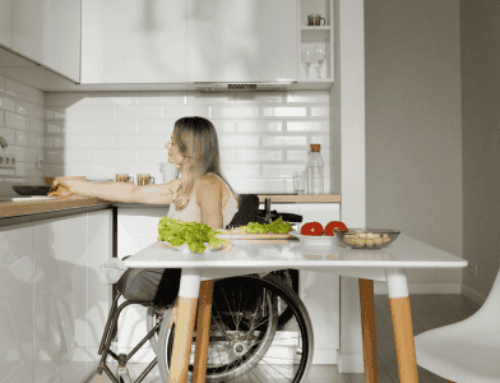
In this third article of the Feeding Fussy Kids series we’re going to cover the Where of the Division of Responsibility:
Adults decide: What to eat. When to eat. Where to eat.
Children decide: How much to eat.
It is the parent/caregiver’s responsibility to decide the “Where”, that is the location where meals and snacks are eaten.
Always at the table
Sitting down at the table together as a family for meal times has been shown to have many benefits.
Firstly, it provides your child with the cue that now is the time to stop and eat. If they are allowed to come and go as they please they are less likely to eat a full meal. This in turn will see them looking for extra snacks in between meals. As outlined in the previous Feeding Fussy Kids article, the timing of meals and snacks plays an important role in addressing fussy eating tendencies .
Making your child stop and focus on the meal means that they are more likely to interact with any new or previously rejected foods that you have served. They need to experience a food before they are going to happily eat it regularly. This may involve progressing from having it on the plate to touching it, smelling it, licking it and then taking a small nibble. In younger children this type of exploration of food is often mistaken for them ‘playing’ with their food. This exploration is an essential part of development so you should allow them to do this. By having them sit at the table the mess that they may make is more easily contained and manageable.
Research shows that children need to see their parents/carers eat a food before they are willing to try it themselves. Sitting with your child for meals gives you the opportunity to show them how much you enjoy eating a variety of foods. This will likely get them interested in trying a new food for themselves.
Sit down for snacks
Children should also be asked to stop what they are doing and sit down to eat their snacks. This doesn’t necessarily have to be at the dining table. It could be at the coffee table, or on a certain rug or blanket laid out on the floor. This signals to the child that it is time to stop and eat their snack, which will assist greatly in implementing a regular meal and snack routine. It will also ensure they eat in response to hunger and satiety cues in the absence of distractions.
Away from distractions
Meals and snacks should be eaten away from distractions such as TV, toys, iPads and mobile phones – this includes both children and parents! Avoid using these to distract your children from the meal in an attempt to get them to eat certain foods. Even if you do manage to get a mouthful of the meal into them, you haven’t addressed the underlying issue of fussy eating.
Removing distractions will allow your child to focus on the meal and interact with the food. It also provides them with the opportunity to observe what others at the table are doing. Children need to see parents/carers model healthy eating and meal time manners. This is an important step in a child’s development of eating habits. They are also more likely to respond to their own hunger and satiety (feeling of fullness) cues in the absence of distractions, which is important for ensuring they eat the right amount of food for healthy growth.
A distracted child is also likely to take longer to eat the meal or snack. This can make introducing new foods even more challenging, as they lose their freshness and become less appealing when they have been sitting on the plate for extended periods of time. Most foods are best eaten soon after they’ve been cooked or prepared. A cut apple looks fresh after it’s just been sliced. It then starts to brown and look a lot less appetizing. If your child takes 20 mins to look at the apple because they have been engrossed in their favourite TV show, they are not going to be too keen to eat old brown slices.
Some strategies to help you determine the ‘Where’:
- Give them a cue that it is nearly time to come to the table. E.g., “Dinner will be ready in 10mins, time to pack up what you are doing”. For younger children you can join them to help pack away their toys or games. For older children this can be their responsibility. This step will also help with removing distractions.
- If you don’t already have one in place, introduce a pre-meal routine. This should include washing hands as a minimum, but can be expanded to having them help to set the table.
- Implement a household rule that everyone must stay at the table until they have eaten enough to feel full. (Note that this is very different to having an empty plate!) If your child goes to leave the table, let them know this is their last chance to eat before the next meal/snack. For example, if at dinner then you can say “make sure your tummy is full because there won’t be any more food until breakfast tomorrow”. Be consistent with this rule, the firmer you are now the sooner your child will learn that mealtimes are for eating.
Michelle Saunders is our Paediatric Dietitian expert and can help you with a fussy eater.



